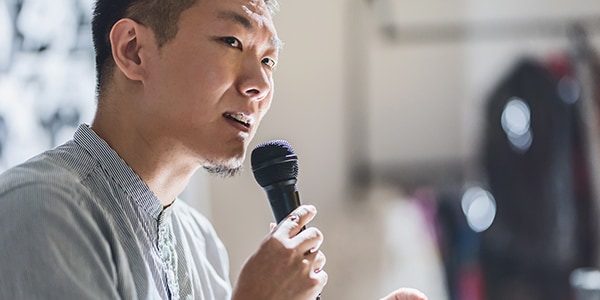Facing our fears: Why do we develop common phobias?
Certain types of phobias can be debilitating without the right treatment. Let’s explore where common phobias come from and how to deal with the objects or situations that terrify us.
If you’re invited on a bush walk, what’s the first thought that springs to mind? If it’s, ‘Oh no, my fear of spiders!’, would you still do the walk, even though you’re uncomfortable at the thought of creepy crawlies? Or would the mere potential of a spider encounter or your fear of snakes bring on symptoms such as sweating, nausea and tremors, making you refuse to go?
A key difference between a fear and a phobia of something, such as a specific object like an animal or specific situation, is the extent to which it impacts your life, says clinical psychologist Corrie Ackland, from Sydney Phobia Clinic.
In severe phobia cases, people can go to great lengths to avoid being exposed to flying or elevators, for example, which worsens the phobia in the long run, Corrie says.
Originating from phobos, the Greek word for ‘fear’ or ‘horror’, a phobia is a type of anxiety disorder linked to an excessive or irrational fear of something. Symptoms of phobias can kick in even when the object of fear isn’t present – the anticipation of something, like social situations, can activate the fight or flight response.
“We consider fear quite a normal and adaptive response to something that is quite threatening. But when we have a phobia, that fear response becomes attached to something that either isn’t threatening at all or is nowhere near as threatening as it feels,” explains Corrie.

Is it really a phobia?
Some people don’t meet the clinical criteria for a medically-reviewed phobia diagnosis – which is described as “marked impairment or physical distress” – but they still experience “out-of-normal-range” anxiety, something Corrie calls “the subclinical range”.
For example, if you have a social phobia like a fear of heights, your heart rate might accelerate when you’re at the top of a tall building, but you don’t avoid going to the top of a building or experience any of the more extreme symptoms like developing a panic attack.
“The prevalence rates [for the general population] are between 8% and 12% for phobias,” she says. “There’s not a great breakdown of which phobias people suffer from, though. With some phobias, research suggests that up to 40% of the population may suffer to some extent. And that includes that more subclinical range.”
The most common phobias include:
- Claustrophobia – fear of enclosed spaces
- Aerophobia or aviophobia – fear of flying (which sometimes goes hand-in-hand with claustrophobia, Corrie says)
- Glossophobia – fear of public speaking
- Trypanophobia – fear of needles.
Why do people develop specific phobias?
The exact causes of phobias are unknown, but there are several contributors:
- Biological factors. An imbalance in brain chemistry (especially serotonin and dopamine, which are neurotransmitters, or chemical messengers, between the body’s cells) can cause feelings of anxiety. In addition, some people may be predisposed to fear certain things. “People with heightened anxiety or any other anxiety disorder are more prone to developing phobias,” Corrie adds. For example, agoraphobia is the fear of places in which you might feel trapped or exposed, such as crowds. “Agoraphobia is more likely to develop for people who have panic disorder [when panic attacks are recurrent and disabling].”
- Environmental. Learned responses can play a role. “Some children may learn phobia by observing a parent’s phobia,” explains Corrie. “We probably see that more with needle phobia.”
- Situational. A particular incident or trauma might give rise to a phobia. “Driving phobias would be a good example, where someone has felt like they were in a close call [with a car accident] and has had a phobia develop from that,” explains Corrie.
How to treat common phobias
The standard treatment of phobias is cognitive behaviour therapy, which helps you develop practical ways of dealing with symptoms of phobias by changing the way you think and behave.
It often involves exposure therapy, where you’re gradually exposed to the object of fear to help develop control over your responses. Medication may be used in the short term to treat phobia effects, such as anxiety.
As part of exposure therapy, Corrie's clinic uses virtual-reality technology, which simulates experiences related to the phobia, such as taking flights, in a safe and controlled environment.
“It takes a lot of people by surprise that we can treat a phobia – they see it as a personality quirk, and certainly don’t consider it something they would see a psychologist about,” says Corrie. “But it is a very straightforward treatment and we see results quite quickly.”
If you feel like you might be displaying symptoms of having a phobia, speak to your GP or medical specialist.
Words by Trudie McConnochie
First published June 2020
related artciles
23 wheelchair-accessible and pram-friendly walks
Wheels are no barrier to traversing Australia’s great outdoors. Here are some beautiful wheelchair-accessible and pram-friendly walks across Australia, listed by state.
MANAGING ANXIETY: HOW TO FEEL MORE IN CONTROL
Anxiety affects 1 in 4 Australians. Here’s what it can feel like, and the treatments that may help.
WHAT CAUSES PANIC ATTACKS (AND HOW TO MANAGE THE SYMPTOMS)
Panic attacks are more common than you might expect. Find out what causes panic attacks, what are the signs and how to deal with the symptoms.
ECO-ANXIETY: ARE NATURAL DISASTERS CAUSING OUR CHILDREN TO WORRY?
Here’s how you can help reduce your children’s eco-anxiety about events like the bush fires and give them the confidence to take steps towards a brighter future.